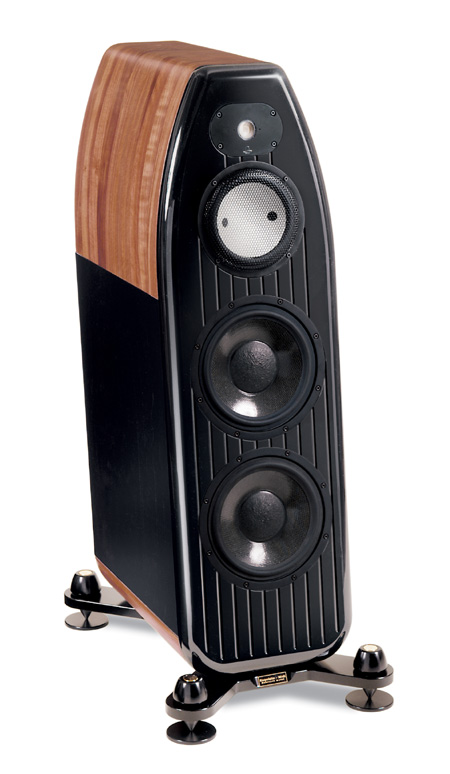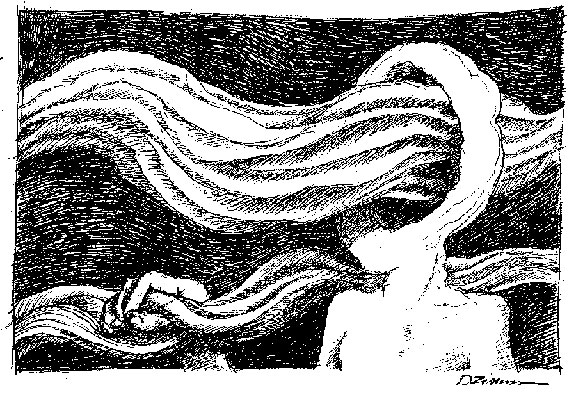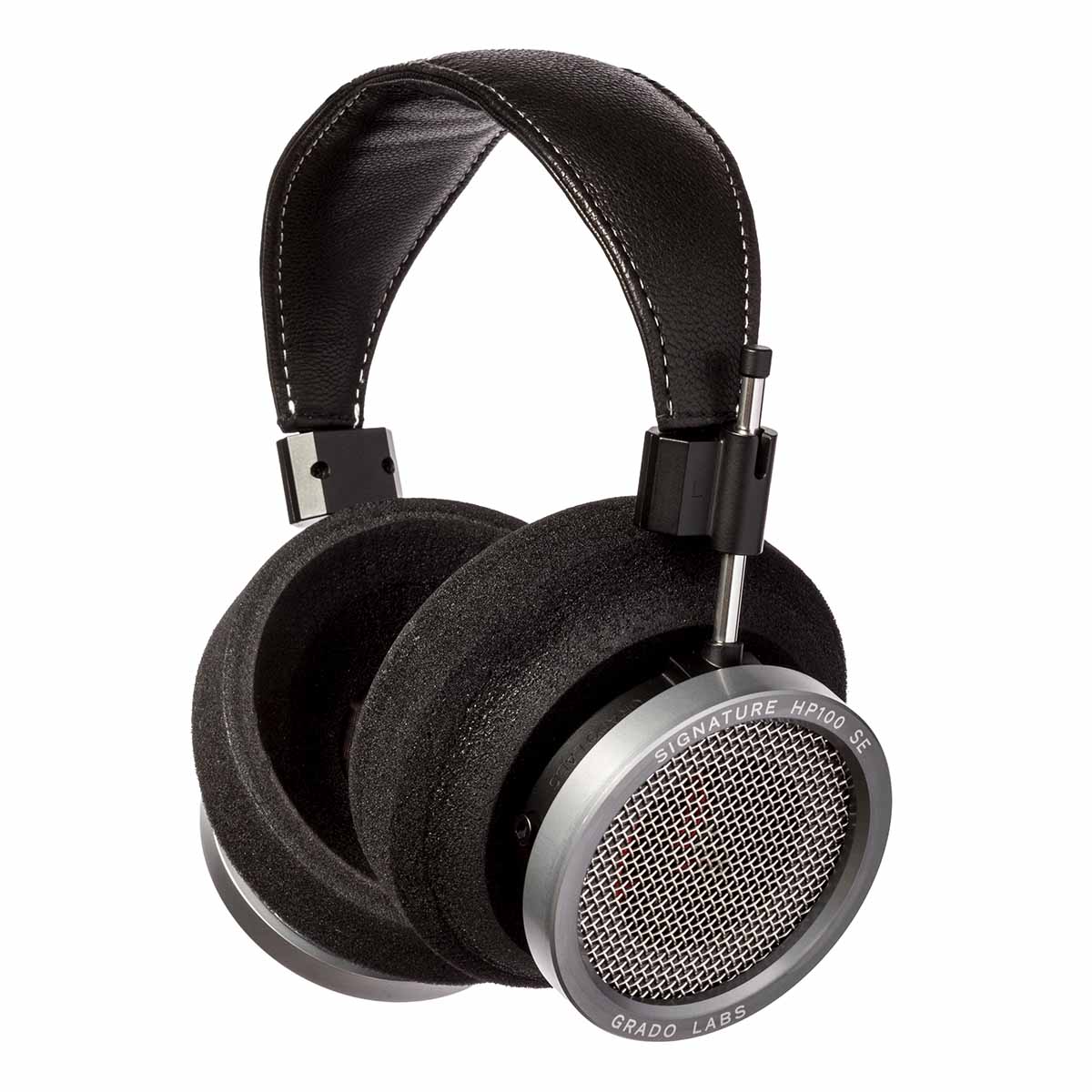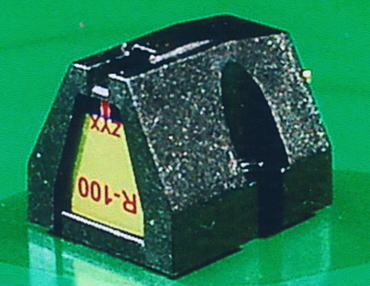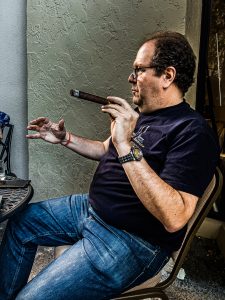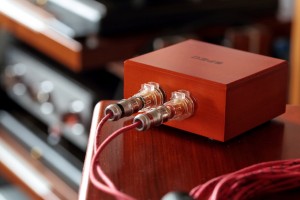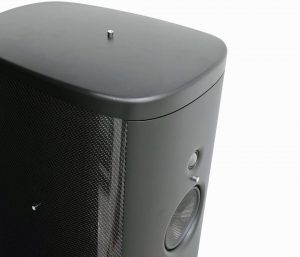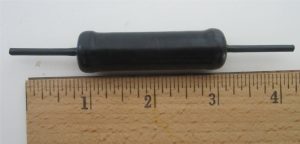This article, by Clark Johnsen, originally ran when Positive Feedback was in print - Volume 8, Issue 2, 1999
I. In The Beginning Was The Tone
The amiable, estimable John Marks (or is that, inestimable?), before appearing on the cover of our previous issue, addressed in TAS #115 the vital topic of how to engage (or is that, ensnare?) more people into the pursuit of high-end audio. Excellent subject! How shall we beget more like us? ... an eternal question posed unconsciously, but reasonably, by every culture. Our own (of audio) would benefit too, by reflecting upon that proposition, and here's my own unique prescription for preservation: Teach the children to sing, and play, and listen to, music.
Astonishingly missing from any latter day political agenda "for the children," music teaching has become, despite evident social-democratic aspects, a conservative concern and one promoted especially by the media-lampooned Christian religionists. Indeed, the great classical music, from Palestrina through Bach to the Twentieth Century, was firmly grounded in religious practice, traditional voice-leading principles, and the almost mystical quality of vocalic harmony; not to neglect more recent (still called "traditional") music such as gospel and bluegrass, all equally in praise of the Lord.
Each form bears the unmistakable stamp of close listening to other voices. And close listening defines the high-end audio experience, does it not?
Myself, growing up in Iowa, the state then as now credited with the highest literacy rate in the nation—who would have guessed it?—and why not?—we youngsters nevertheless had time in our busy curriculum to be introduced to music and art. My own individual achievement arrived later, in high school, through debate and acting, but what I wanted really was to play an instrument. Dad was an accomplished keyboardist, stylishly tossing off both pop tunes and Joplin rags (way before their Seventies heyday), and Mom, while no longer active (I never heard her play), had once been an "improv" pianist at the "silent" movies. Many testimonials did I hear, to her skill.
Naturally in this family it was thought I would learn to perform, although no real pressure was ever put. And I tried, God knows I tried. Many were the reeds futilely scraped and piano lessons dimly taken. Yet I never ever gave up hope for music and me. Why? Because throughout early grades the Iowa school system required that teachers roll out phonographs and play segments of classical music for some twenty or thirty minutes every week. Grieg, Tchaikowsky, Prokofiev, Ravel ... boring to many, but a revelation to others such as myself. What hooked me? The plangent lament of an English horn? The droll chalumeau of a clarinet? The first triumphant entrance of a grand piano? Something reached out and placed a colonizing arm around my shoulder, with that fine music called "classical." And this happened after repeated hearings over a very ordinary machine when I was still young and impressionable.
Later my 750-student high school featured jazz combos and a concert band and an orchestra and two choirs, with occasional visits from the Sioux City Symphony. I'll never forget when our East High band and orchestra joined for an all-out assault on Ravel's Bolero. The rafters shook as drummer Franny Grimoskis rose to the fury with twins Vance and Dennis Yanney steering the brass. Man were they loud!
Then I heard my first rock'n'roll group, Bill Haley and His Comets, also my first electronically-amplified concert. My head spun! All that great music! And what incredible sound power from just four guys! But back in those days (recalling our early classical education) the taste among Iowa youth was not to employ mere amplitude, but to harmonize. Singing groups were active both at church and school, and a capella doo-wop was emerging. Hey, the hugely popular Everly Brothers hailed from down in Shenandoah! Amidst these musical splendors several other instrument-challenged friends and I embarked together on a hobby which had just begun to pick up steam, high fidelity.
Back then not even musicians were immune to the allure of a good audio system. In fact the concertmaster of the Symphony, Jack Wolff, opened the area's first hi-fi store just two blocks from East High. Many were the happy hours spent there! Thus did music on records, much of it new, played over a good system, become a major part of my life.
So there you have it: Expose the children to fine music in their youth, teach them to sing and play (so far as interest indicates) and they will grow up to be natural musicians and/or keen musical listeners.
No other way exists, to create a firm basis of appreciation for music in the home as supplied by high-end audio.
Teach your children how to listen, and about what their parents hear. No other way exists.
II. Going MOBIE
Switching now to pure audio frippery (some may wish to skip to Part V), the topic of cable break-in has occupied altogether too few inquiring minds. While granting that the problem exists, most of us have been content to stay with the old ways: Unpack new cables, plug them in, let ‘em roll for a couple days, then listen. More than that seems unmanageable. Then along comes a device which bids fair to become a monster hit—maybe even with Monster!
But first, who remembers Duo-Tech?1 That little brown box, made in China and sold out of Washington state,2 would "condition" interconnects and speaker cables with a low-level simple sawtooth wave. For perhaps three years it was a staple at careful dealerships, designers' labs and customers' homes. Almost simultaneously, however, interest subsided, rumors said it actually harmed cables (at least after excessive use), and the distributor was screwed by the PRC supplier and folded. Duo-Techs are rarely seen today.
The next wave of conditioning arrived several years later with the Purist PAD-CD and the (much cheaper) Sheffield/XLO "Test and Burn-In CD." Both purported to treat the entire system (minus phono) and both had their admirers and detractors; and both could be, and were, used to exercise cables. Worth noting: Each Purist disc (at $150) is a one-off CD-R, which designer Jim Aud claims is needed to achieve the desired effect. This raises some interesting questions about digital data on CDs, but that's another story altogether.
Meanwhile one segment of the cable world remained wholly unconditioned except by (so far as he knows) this very writer: namely, phono cables. Back in the late Duo-Tech era I had rigged a DIN connector to burn them in, on the highly credible theory that cartridge-level currents would never do the trick. How it escaped everyone's attention that no wire can be broken-in within the confines of normal voltages and currents generated by an audio system—and that for decent results you must overdrive them—I shall never know, but therein lies the secret of MOBIE (Maximum Overdrive Burn-In Engine) from G&D Transforms.
Returning for a moment to the historical account, Sumiko's FluxBuster gained a foothold as a "cartridge demagnetizer," although not without controversy. The exquisitely expensive Audio Physic version later replaced it in many people's view, followed by the more affordable Aesthetix (which I use today). Cardas Audio, taking another approach, cut an LP that not only exercised (exorcised?) the cartridge but the phono stage beyond, followed last year by Thor Audio's Phono Burn-in, likewise effective. Meanwhile the Gryphon Exorcist was endorsed by Jonathan Scull for daily employment for the whole system (sans phono), which in my opinion the later Densen Demagic disc easily supplanted, although it takes three minutes. Still, all the above affect the attached cables as well, however temporarily—and who's to say whether any effect be lasting or transitory? But to repeat, to some extent all such devices also condition the cables. How may one differentiate the results?
Another approach entirely is Nordost's highly effective anti-static spray called ECO. But again, who's to say that cable conditioning and static removal are separate phenomena?
Contrariwise, the proposition that wires need any special treatment at all is disputed by most followers of the AES/Stereo Review camp. While several arguments are plausible, all remain untested by their own firmly voiced standards; that shortcoming does not however lessen those individuals' scorn and mockery of the high-end position. In the meantime tens of thousands of listeners have attested to the improvements that wire and wire conditioning can make. For an ironic sidenote, in a recent issue of JAES, unintentional corroborative evidence appeared in the form of an article on string instruments, which asserted that these sound better after being broken-in for a while—sometimes for eighty years! Talk about aural memory! AES stalwarts however do not allow such remarks concerning audio.
Which brings us back to MOBIE. Inspired by TG Audio's Bob Crump and designed by Tony DiGiovine, here be the first new such device in a decade. Too early to report any long-term results of my own, I must rely on Bob's authoritative opinion. A while ago I had promised a sidebar from Mr. Crump on the elusive topic of cable conditioning, but now that need has been negated. This from a recent communique:
"...Guess what? Five days on the MOBIE with no lingering nastiness and these [cables] sound the way I envisioned them and I'll bet a month on the MOBIE would be even better. The original interconnects were diffuse and got slow in the highs and lows, the Purist disc fixed these problems so they were listenable and now the MOBIE tightens up the focus, highs and lows even more. I am finally pleased and I guess I should have known that this would be the way to go after my trials and tribulations on speaker wire... So here is ground-breaking news keeping in mind that silver has always been a bitch to break in compared to copper." Bob further says its effects on digital cables are particularly dramatic.
The MOBIE produces high current/voltages—for digital a 5-volt pulse, for analog 12 volts. Both are square waves, although the digital one is further modulated at a multiple of the CD frequency. (Tony thinks this is irrelevant, but what the heck!) MOBIE comes equipped with two RCAs and an XLR for analog cables and single RCA, BNC and XLRs for digital links. (A DIN-to-RCA adapter is offered optionally for phono wires.) Cables may further be cascaded with female-female in-line connectors for an unstated overall length. Price is $250 from G&D dealers or factory direct. Highly recommended for anyone who has cables that cost that much, or for whoever experiments heavily with them.
III. Another Fistful of Silver
Earlier I reported on Gordon Lewis' silver interconnects imaginatively called The Perfect Foil. And I liked them very much. Having now compared these to stiffer competition (which shall remain nameless, sorry!), that impression is reinforced. Also I remarked that his speaker cables seemed promising, although I had only heard the lesser version. Today, however, I own the middle level "AG#4" which consists of four-per-run fine-grade silver foils floating loosely in tubes (i.e., in an air dielectric, very important I think). And they are very, very good.
Silver first caught our collective ear through the Kimber KCAG line, which I for one never much enjoyed, finding it too bright. The Kimber defense very reasonably went, that it was revealing flaws in the system. But then along came a whole new generation of silver designs involving thin foil, first advanced (so far as I know) by Allen Wright and first reported upon in this very location. And I stand on that initial assessment, that here be a first-rate cable configuration—nor does it sound bright!
Currently I am enamored of silver foil and even of silver rod sometimes, and this multi-silver-foil air-dielectric cable from Lewis Laboratories is performing magnificently for me. In fact it has displaced my long-regarded (in audio temporal terms anyway) Synergistic Designer Reference—still a great cable for bass—but overall, and especially in the "vital midrange" as we parrot reviewers like to say, it can't command the candlepower to illuminate the music equally.
Silver foil lives! And long life to its putative discoverer Allen Wright, a Positive Feedback advertiser (the disclaimer section) and author of a literate and fascinating book that explains how to do it yourself. Except, good luck! As in so many instances, one's eagerness to save money often outstrips an accurate evaluation of one's ability to source and solder. Best recommendation: Buy the book, but be prepared only to learn immensely from it, then proceed to Lewis Labs for the realized ultimate reality. (Eight-foot sets of Perfect Foils range from $900 to $2400.
IV. Block That Kickback!
While never one to toot his own horn needlessly, after a little practice I do like to toot others'. Thusly: A new type of tweak — no, pardon me; in proper parlance, "Fine Tuning Aid" — has appeared on the market, things that hook onto the signal path at various locales. Similar devices existed earlier, notably John Bicht's Wood Blocks that inserted into the AC line to filter out bad stuff. (While Wood Blocks appear to attach in series, the actual circuit is parallel, but because of the current levels involved no point can be left exposed.) But now we have units that attach to places where wires are safely in the open.
News of such contrivances first reached most people, directly or not, from mention by Marty DeWulf of the Triphasors in Bound for Sound two years ago, which only later were drawn to my attention by a reader in San Diego. I called up Mike Disch in Wisconsin, we spoke at length... but nothing transpired. No story yet.
And again: Mail arrived from Harmonix (whose infamous dots from long ago I still use), concerning gadgets that fasten electrically onto loudspeakers. What a bold conservative move for this radical company! But nothing happened on followup... no story again.
My first personal experience in this area came with a visit from Allen Wright, an occasion on which he demonstrated two instruments of such scientific out-thereness that I won't even mention the second; the first, equally new to me, he connected to my speaker terminals. Everyone found these pleasant all around except in their announced price, $1150. While Allen has not returned recently to my shores, being of the genus genius he shall surely deliver before long on his promises of better and cheaper. I wish I could tell you more.
Then somewhere I read about Enacoms ($99/pr.), but they only dimly entered my mind and only recently reached my hands, too late to comment officially, although they seem ineffectual. Soon thereafter the Bybee Quantum Speaker Filters ($600 or $1200 the pair) were lauded by Jennifer Crock—"lauded" is putting it mildly—in PF Vol.7, #5, but when they came to me very briefly, so quickly it hardly counts, I was unimpressed. Of course that's unofficial too. Best of the lot so far, of those not tested at length: The Luxor Hi-Pros from Illinois at $200/pr. Totally unbroken-in, they were an immediate bass hit.
Also I have Shakti "On Lines" ($100/pr.), ostensibly for low-level signal paths, so I have not yet placed them near speaker terminals. (Let it be known, however, here for the first time in print, that Shakti has developed new OEM On-Lines that attach, very discreetly, inside the interconnect termination capsule; manufacturer enquiries welcome.)
Big Question: Do any (or all) of the above replicate the termination boxes incorporated by Transparent, MIT and others? These companies have taken considerable flak for their efforts, perhaps unfairly we can now see. But with possibly equivalent separates available, we may at last judge for ourselves on our own cables.
And in the case reported here, that judgement is highly positive, affirming my gloomy view that loudspeaker designers mostly don't know what-the-duck. (Ditto electronics and cable guys, not to mention the rest of us.) For proof in hand I submit the High Definition Links (HDLs) from Walker Audio, or, less delicately perhaps and in non-company-approved terminology, "Lloyd's Dangles." And God! do they reproduce!
Enough of that. From a poopsheet: "...prevents RFI and VHF noise from being transmitted to your speakers ... allowing the pure music signal to pass through unaffected ... more natural sounding... better focussed... faster dynamics..." Geez Lloyd, you sound like a goddam reviewer.
Besides which, HF blockage cannot entirely explain their performance. Someone would have done that stuff by now, and probably has. Something else—say, blocking that EMF kickback—must be involved too.
Lloyd Walker, for the record, also manufactures a turntable dubbed the "Proscenium," which sells for a gorgeous fourteen grand and is (I think) Harry Pearson's current significant spinner. Myself, I can hear the Proscenium in Bill Gaw's New Hampshire Super-System where it sounds fabulous ... but so does everything there, and no other turntable around, so who knows? The Walker Motor Drive, a supplementary unit, has been widely admired by Michael Fremer et al. Walker also makes a support and resonance control system called Valid Points ($260) which I currently utilize and intend to discuss further; also Lloyd distributes Ron Baumann's highly original line of fine-line cables called Omega-Micro.
That said, the Dangles are Lloyd's own and very much worth (at this time) the price asked, $295 the pair. Or put it this way: their impact surpasses many speaker cable upgrades that cost one or two thousand more. But they hardly look expensive; Dangles come in small birch shells ("to minimize dielectric interference") with deep-silver-plate spadelugs attached to high-silver wire. Inside are basic RLC elements specially fabricated (nothing off-the-shelf) and fussily aligned; "Good luck chopping it apart," Lloyd merrily wishes his would-be imitators.
The 30-day grace period and two-year warranty should be sufficient for anyone to take the plunge. Do it; and remember, dear reader, you heard about it first here, as almost always, and strictly on the up-and-up, in Positive Feedback.
Now to sonic benefits: Which I am on record as loathing to relate because you should believe me already and go out and TRY THIS FOR YOURSELF without needless further prose. But just to appease all you men who pore over words anyway... in my second system at work (maintained and tweaked by Ken Weller), and on the highly-regarded-by-Marty-DeWulf Echelon 2.0 series-crossover three-way loudspeakers—hotdamn for hyphens!—Dangles nearly eliminate what one had tolerated before as a defect in an inexpensive ($300) Grado cartridge. Meaning, a certain fuzziness around notes, often said to be dust in the coil, or suchlike. Not all around the note, actually; mainly, afterwards. Transient recovery distortion, one might call it. Or, a bad overhang.
This drunkenly familiar but unenumerated distortion smears what musicians hear, and want us to hear. And now it appears, sometimes anyway, to have a hithertofore unimagined cause, and be curable.
My first hearing of Dangles involved castanets (a well-nigh perfect instrument to reveal finesse) on Mingus's Tijuana Moods album. What might have been dismissed as cartridge grundge (augmented by modulation distortion on the mastertape) earlier, was now found to be a local artifact. The bass player's line was somehow enhanced as well, becoming more tuneful, better defined both in pitch and in space. Similar bass enrichment has been reported elsewhere, with claims it surpasses mid-range and treble effects. This confirms my earlier suspicion about mere HF blockage, else wouldn't delicate upper frequencies register as more prone?
OK, didn't I sound there just like your typical reviewer? Whom I profess to detest the likes of? Fooled you!
Oh, you don't get the joke?
Pity. Because here is a trick that really works! I'm trying to tell you and you won't listen, without more words.
Very well. How about in other systems? Considerable variability must be assumed. Glad to say, results are in from a wide variety of gear, Edgarhorns to Merlins and B&Ws, Ongaku to Plinius and Jolida, and agreement is general: If you have $250, the probable street price, and especially if you were contemplating a major cable replacement, Dangles almost certainly represent better value.
They also surpass many equipment upgrades.
That's what makes audio so scary, and such a sorry sight sometimes.
Science—a Greek word meaning "knowledge"—or should that be, "learning"?—scarcely applies to audio because so little is already known. High-end exists as a brilliant-field of hypothesis in what most deem as a dead-end canyon of the spectrum. Figuring that audio is done and gone, they fail to take it seriously. And we know they do think that, because everything you and I hear is rejected by the Audio Engineering Society, by toadies @.edu and by their ready accomplices in the Post Times Journal. These types apparently have better things to do than listen for themselves.
Face it: The professors and "professionals" alike, have left it up to us at home to make vital, basic discoveries in the old-fashioned way, no industrial research lab involved; often one must even found a small company to pass one's learning on through pricey products, the only way nowadays to get anyone's attention, it seems.
Ironic, eh? How Thomas Edison, acclaimed inventor of the phonograph, with over eleven hundred patents to his credit, also created the industrial research laboratory, the nemesis today of his "favorite baby," and ours, the phonograph.
Denial, we call it: The conditioned condition a conventional thinker finds himself in. Messed up by what he reads, he refuses to stop, look... and listen. He needs help. So please, do the honorable thing, whenever you encounter someone who denies the listening faith, tell him it's time to stop running, throw a blanket around his shoulders and haul him home. To warm the subject up, try something easy like Walker High Defintion Links; and when you are finally asked, "What's in these things? I have to know how they work!" simply reply with a shrug and a friendly grin, "Damn if I know! Aren't they great!"
PS: On a late-breaking May tour of California, I attached the HDLs to VMPS Ribbons, good loudspeakers already. Brian Cheney, no fool of a designer, immediately reproved me: "Clark, why didn't you bring these to the Show?"
Brian, I didn't know!
V. Deep ECO-Logic at CES
Readers who have long been with me (and this fine magazine) will recall the Show reports I once did. Set mostly in the hallways and parties where all the important stuff happens, I found them very rewarding to write. After my retirement I may peruse several with pleasure, recalling those days, but they were difficult to produce and eventually were abandoned. A pity, as my unique and widely acclaimed coverage of real life among audio conventioneers has never since been duplicated, although some slack is taken up by Jim Saxon, Dave Glackin and Lonnie Brownell. Regardless, I still have these peak experiences and still take notes and presently plan a conflated report of highlights spanning five years, with an implicit challenge to the reader to identify what's new and what not...
Not that it matters, you'll see...
To all non-writers, however, I must say, while on the topic, you haven't the foggiest notion how much like getting teeth pulled, the act of writing is. ("The art of applying the seat of the pants to the seat of the chair."—Mary Vorse. "The art of torturing a blank sheet of paper, and vice versa."—Mary McCutcheon.) I'd rather be reading, thank you; only, as I've often remarked, reading is for sissies, writing is man's work.3 Another reason why my show reports no longer appear: Writing goes far better without real people peering over one's shoulder; getting actual personalities right, as I insist on doing, is never a snap. But enough of the complaining.
This year, my devious plan aside, one thread of events at CES must be rushed to print. The Nordost company, from Massachusetts, besides making an impressive array of cables, also market the aforementioned anti-static spray called ECO. Said to be safe ecologically and to last for at least two or three weeks even on Teflon (a problem with supermarket products), ECO works genuine sonic wonders.
When ECO first arrived, I tried it on cables and really liked it. Then one day Vin Garino informed me that some crazy guys were applying it on CDs! Not wishing to be thought one of those, I discreetly waited a week, but then, lo! Here was a trick almost as good as CD "degaussing," which I had earlier and (to my disparagement in certain circles) widely publicized.
For anyone still unfamiliar with the concept: those pesky polycarbonate and aluminum sandwiches (baloney and Wonder Bread to some) that satisfy modern music-delivery appetites, also accumulate a modest static charge, and when those loose electrons are removed, the bright shiny things sound ever so much better. In particular, their headache-inducing stridency nearly vanishes. This subject was first broached in print by myself, I believe, in a letter to Stereophile back in November 1992, for all the good their massive circulation did, because CDs still sound edgy and not a single player known to me is immune yet to this treatment; only one comes even close.4 Why?
Because, in "the designer community," where price and fascia and fancy algorithms rule the day, no one seems to care, or even know, about any end-user improvements to sound.
Likewise ignored is the fact that most CD players are enormously susceptible to AC supply aberrations and to seismic vibration, again to most designers' probable dismay, from which quarter therefore no explanation issues, nor any real solution situated in their almighty powerful (to read the press reports) digital domain.
But I heed arrest of my stray. Uh, stray ahead of my arrest. No...
Well, anyway, here I am at CES ‘99, the Last Show of the Twentieth Century by one reckoning, toting around some strange fluids with the wacky capacity to metamorphose any exhibitor's CD-based audio system from commonplace to exceptional. How is this accomplished? Read on.
Formerly I traveled with many such tools and tricks, but gradually I eliminated them. Mine gracious hosts were rarely concerned with what anyone brought, for good or for ill, so this year I am trimmed down to just two hat-rabbits: ECO and Optrix. Optrix, a polish for the business side of a CD, miraculously increases low-level resolution. (Half a dozen competing formulations are available, and I know I once promised to compare them all; leave me alone!) Your typical overself-confident designer remains as blissfully ignorant of optical polishing as he does of "degaussing." Today, at CES, by concentrating on the two simplest tricks of the tweak trade, which transform almost any CD from shrill and shallow to relatively sublime, I intend "tweak technology" to make an impact on designers.
(A cautionary note to newbie readers: Long have I claimed that both these surface treatments, or equivalents, are utterly necessary to hear and enjoy CDs fully. And like any exercise, you don't know until you try, do you? Note too, I have no stake in either company; not a penny do I receive.)
As usual my pied à terre is Brian Cheney's VMPS room (which, with new extended-ribbon+dynamic loudspeakers, will win a Marty DeWulf Best Sound award in Bound for Sound) and there I am found, adorned in suit and tie, first thing 8 A.M. Thursday morning. After some fine-tuning with ECO and Optrix, I am ready to head out and help anyone who makes nice to me. Before I can exit, however, who should miraculously appear, but John Murphy the Ph.D. chemist and President of CD Dynamics, maker of Optrix! How proud he is, to see his product already on display! And being touted! (Where else? I have to wonder. Probably nowhere. Who would care, or dare?) John's a subtle, funny guy of the old school (in old-school parlance) and together we while away a pleasant quarter-hour before disappearing our separate ways down the endless corridor.
VMPS, like many exhibitors, is located next door to the official site, at T.H.E. Show, which I judge equally good thanks to heroic exertions by Mike Maloney and Todd Brown. Thus I spend my whole first day at the St. Tropez, spraying and wiping, wiping and spraying. When on Day Two at last I reach the Alexis Park and hit the Nordost room and present my battle plan, dozens of sampler packets are dumped into my briefcase. These happily eliminate the need for bottle and Kleenex; one swift swipe with the small towelette inside does the trick! So rapid and immediately audible is this simple trick, I soon abandon the bottom-polishing step altogether in my traveling show. Sorry, John Murphy! But at least I flash the Optrix box to everyone.
So up and down the hallways and into various rooms I continue to roam, greeting old friends and meeting new. Not that either sort is more prone to suspend disbelief! Their problem, as I have discovered over the years, is that every exhibitor wants attendees to think that what's being heard is fully the fruit of his own labor, not some goddam tweak! Therefore I never do my thing in front of reviewers, retailers or the public. From the last group especially, the truth must be hidden. Thus have I learned to hang around until an area is empty, to conduct my peripatetic demonstration. Then do I become most welcome, with cries of approbation ranging from "Can you do another CD please, please?" to "Leave us some stuff!"
That's no boasting, but out of respect I shall not name names, at least not presently. Only instances where contrary enthusiasm is aroused, or a significant discovery made, seem worth reporting in detail.
The Burmester suite. I show up here not to demo tweaks, but to procure their own demo CD which has been playing around, sounds great and costs $30 even to honchos, word has it. Immediately upon entering I identify myself as press, impress upon them my lofty reportorial mission and attempt to cadge a freebie. Denied! Stymied for a moment, I turn to their system and listen. God, it's ... gawdawful! All that money... and size... and beauty... and prestige... and yet... it's rife with that peculiar stridency that produces extended-listening fatigue, or what a friend once described as "the punishing aspect" of digital audio.
A glittering thought occurs: Improve their sound and get a discount! Obediently I pull out an ECO packet, show it to Herr B. and am confronted with this lightly-German-accented but perfectly American reply: "Thank you, we do not believe in tweaks."
Dieter continues: "There is no science behind this."
What to say? "OK, let's just try it then."
"No."
"What! ... No? Well then... let me leave you with some trial packets, that way you can go home..."
"No."
"No? Really?"
"No. There is no evidence to support your argument."
"I wasn't arguing! Just take and try!"
"No. No need. Thank you anyway. Where did you say you're from?"
"Uh... Positive Feedback... magazine.5 Also my own place... in Boston... The Listening Studio..."
"Unh huh. You came in for our CD? Here it is, friend, my compliments, for free, but we need none of your so-called tweaks, we get along very well without them."
"Gosh... [speaking faux-humble-American to an educated, slightly snotty yet generous European] ... you're first-rate! A gentleman, and a Mensch!"
He visibly brightens: "Thank you!" I toss a final handful of ECO packets onto the counter and Dietrich Burmester brushes them back with a confident smile.
For what might be quite an ear-opener, I drop in on dCS. The Purcell Upsampler takes a 16/44 CD datastream, upgrades to 24/192, then converts "down" to analog via the Elgar. This belabored, one might even say bizarre procedure provides sonic results superior to anything else, many say. ...And now, after listening, I am amazed! The dCS Purcell/Elgar may well eclipse my two previous good experiences with CD. (Granted, no SACD in my ear yet... )
Only, I must wonder what improvement now can ECO render? And in the upcoming impromptu contest, whom should I cheer for? A nickle trick done every play, or $19,000 spent once and forever? Or, minding Moore's Law, why not just wait until Sony Philips Panasonic find a way around? And maybe too around their own current DSD, DVD, HDA, Super-24, Mighty-96 entrants? Questions to ponder, surely.
My ruminations are halted by the departing audience. Team dCS learns that I wish to conduct an experiment. Gamely they hit repeat: A CD before-and-after. And again the harsh digital artifacts and enharmonic distortions nearly disappear, and the music breathes freely. A blindfolded newcomer might even think, aha! Analog!
Once more, the straight 16/44; then I apply ECO, and damn! It's almost as good as the upgrade process! A small difference, yes, but so close. So close! If only I had used Optrix too!
Proving, what? That here be:
A functional digital-domain correlate to disc-washing... proving that it can be done!
And that soon you may no longer need to swab your discs on both sides to achieve beautiful sound, although that privilege currently costs dearly. Which further means that:
dCS MAKE POSSIBLY THE FIRST
DIGITAL OUTBOARD UNIT TO EXTRACT
THE HIDDEN INFORMATION ON A CD
THAT ONLY "TWEAKS" OTHERWISE SUPPLY.
And finally: That the digital discs you already own, may sound just as good as the next generation you're poised to buy.
What a story!
Think! Has anyone in this benighted industry—anyone?—retailer, publisher or manufacturer—cared to arrange open comparisons between any of the proposed new encodings, and tweaked and/or upconverted CDs? Moreover, who of the above has enlightened us as to why such things work so well, so musically? Or for that matter, why most CD-Rs excel the regular CDs from which they are made?
Well then, until the day of ultimate reckoning arrives, it seems we must prepare ourselves for a brute-force-feeding of escalated numerics. All for admirable sonic reasons, of course, although sponsored by the same people who swore earlier they were giving us perfect sound, forever.
But here's how it shall go down. In each successive digital system the same old errors become more deeply embedded. Because no one who heard them originally was invited to testify before The Committee, those errors will accumulate. Eventually a Y2K-type problem will be discovered and the whole sorry edifice junked in favor of... something completely different. One constant: Every new encoding scheme achieves its full potential long after succumbing to another "advance in technology."
What can be done? Maybe go on strike! Refuse to buy expensive new discs with no proven promise. or new gear that handles multiple formats, or employs proprietary algorithms from Levinson, Wadia & Co., each promising to bust the latest sonic frontier. Instead we wait until convincing evidence is offered.
Further questions. Are dCS themselves cognizant of this? ... Probably not, not from what I witnessed. Will someone develop equivalent, affordable digital solutions? Probably not before our current discs become extinct and we have begun acquiring another whole wallful of new AB-CDs. Or whatever alphabetic D-du-Jour. (XTCD?) Still, you want to play all digital formats right; right?
Sorry! That now requires keeping up with the latest and greatest, homebrew stuff to play three, not just two, turn-of-the-century configurations. Or more!
Remember 1950?
78-45-33?
Sucker! Welcome to the high end. Ha ha ha ha ha ha ha!
Are you ever stuck! You recognize good sound. But you can not buy it pre-assembled! And so somehow must make do yourself. Just like in those good ol' bygone Fifties.
Well, be grateful at least for small favors. Such as the ability to outthink big-time designers, big-name reviewers and huge corporations in the comfort of your own home.
So what's my point in this tirade, you wonder? Simply this: That listening, alone, matters.
Listen with mind open and mouth shut.
Listen, to achieve your dream.
Our Grand Poohbah audio engineers clearly cannot listen, else mistrust their own ears, or they would be witnessing for the truth. You know that for a fact.
You know that for a certainty!
And you are certain not because someone says so, but because you have listened for yourself. From experience you have formed your own conclusions. And you appreciate that I am not engaging in flattery. But may I ask?
What do you plan to do with your knowledge?
Here's one answer.
Immense personal satisfaction, I think, and good fortune too shall accrue, to whoever finds means to bring "tweako" savvy to the mass audio market, all ready-built. With careful design and economy-of-scale, high-end audio needn't be so expensive. Make it right from the start, encase everything handsomely, everyone enjoys great sound and you get rich!
Pinch me, am I dreaming?
One more story.
Last year at CES I met this fellow in Leo Massi's (Sound II) room. A bulk next to me turned and said, in lightly-Russian-accented but excellent English, "I see by your badge you are Clark Johnsen. Are you also he who wrote The Wood Effect?"
I peered at his badge. Mikhail Koucherenko, High End Audio, Moscow, Russia. "Are you surprised I speak your language?" No, he did not say that. He might as well have, though, to accord with the expression on my face. I have experienced name recognition before, but never from so far. And yet, so near!
"I understand fully the Wood principle," he continued. "But why do I not read about it very often in the press? And how can I get your book while here in the States?"
Ever responsive to interest in my work, and any opportunity to close a sale, I hauled out a copy but decided to give it away instead. "Thank you! Will you autograph please?" he replied. Blush! Soon I discovered that Mikhail may be the foremost high-end audio dealer east of Germany and that his wealthy Muscovite clients follow the American scene assiduously. That could be a big lie, of course, in the grand old socialist tradition, and I be a useful fool of the anti-McCarthyites.
Or whoever.
Back to the present, I have just left the dCS exhibit when I hear myself hailed from across the courtyard. Already it's after closing and my head's full of stuff to organize, but there's Mikhail running up and I recognize him immediately, and fondly too, of course. "Clark! I am so glad to see you again!"
"Likewise I'm sure!"
"There is so much I could communicate to you, we must arrange to get together. But time is short right now."
"Yes! I'm late already to an appointment. (With Barry Grant, also of this fine magazine.] Maybe in Moscow?"
"Certainly! Call me first, though. Here's my home number. But I leave you with this thought.
"Today we talk home theatre... Audio/Video... Think! What's a powerful difference between audio and video systems? ... This! ... We hire others, experts we call them, and indeed they are, to do high-end video installations, but there's no such thing as a high-end-audio expert installer. Everyone must go it alone! And sometimes better for that! So, but, consider this proposition:
"Video looks as good as the professional man can make it. Which is usually, very good. But audio, audio sounds only so good as the customer can make it himself! Whether for better or worse."
A lesson there; and there you have it, from my exclusive source in the Former Soviet Union.
So goes CES.
It's been good.
Later, if you like.
Endnotes
1 Ye Olde Editor still has his—in its original package!
2 Say not so, brother Clark; the Duo-Tech was originally marketed/distributed out of Oregon. By a person who later (recently) ran for governor of the state of Oregon. Who still owes PF money on his Duo-Tech ad account, by the way—which sort of habit at higher levels turned out to be a classic "character" issue, leading to his electoral evisceration. Then again, most of high-end audio is broke most of the time, without the splendid climax of a landslide…
3 Amen, brother. This also applies to the editing and publication ("… "the production and decay… "!) of magazines, which is artistic travail and torment at an altogether different level. Mass producing short shelf-life Spam with piles of bucks and lots of Spam makers is easy; handcrafting each issue as a separate canvas is damned tough.
4 The Naim CDS-II. [Your editor would also nominate the Linn CD-12 for this rarified company… ]
5 Uh-oh! Now you are in trouble, Clark! Nothing good ever comes from that pack of idealists!





